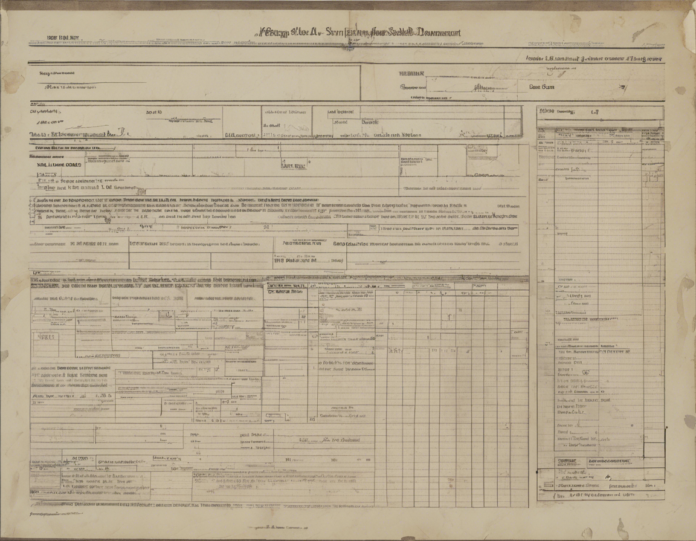In today’s fast-paced digital world, the need for self-attesting documents has become increasingly essential. Whether you are a student verifying your academic credentials, a professional authenticating your work experience, or an individual confirming your identity, self-attestation can streamline various processes and enhance credibility. This comprehensive guide serves to enlighten readers on the importance of self-attestation, the steps involved in the process, and tips for ensuring accuracy and legality.
The Significance of Self-Attestation
In essence, self-attestation refers to the act of certifying that your documents are true, accurate, and authentic by signing them yourself. This validates the legitimacy of the information provided and eliminates the need for third-party verification in many instances. Self-attested documents are commonly required for a variety of purposes, including:
1. Government Procedures
- Applying for passports, visas, driving licenses, etc.
- Availing government subsidies or welfare schemes
- Legal proceedings and court submissions
2. Educational Institutions
- Admission procedures
- Scholarship applications
- Verification of academic qualifications
3. Employment
- Background verification
- Joining new organizations
- Claiming work experience
Steps to Self-Attestation
The process of self-attestation typically involves the following steps:
1. Gather Required Documents
- Collect all the documents that need to be self-attested, including photocopies of your original certificates, identification proofs, etc.
2. Verify Accuracy
- Ensure that all the information on the documents is accurate and up-to-date.
3. Sign the Documents
- Sign each document in the designated space, usually at the bottom of the page.
4. Include a Declaration
- Add a declaration stating that the documents are true to the best of your knowledge and belief.
5. Date the Documents
- Mention the date of attestation to indicate when the documents were self-certified.
6. Seal, if Required
- In some cases, documents may need to be sealed with a stamp or seal to further validate the attestation.
7. Submit the Attested Documents
- Submit the self-attested documents wherever required, ensuring that the originals are also carried for verification if needed.
Tips for Effective Self-Attestation
To ensure that your self-attestation process is smooth and successful, consider the following tips:
1. Use Blue or Black Ink
- Signing in blue or black ink is considered more official and legible than other colors.
2. Maintain Consistency
- Use the same signature across all documents to maintain consistency and avoid confusion.
3. Double-Check Information
- Verify all details on the documents before attesting to prevent errors or discrepancies.
4. Keep Copies
- Make copies of all self-attested documents for your records to avoid any future disputes or challenges.
5. Update Regularly
- Ensure that your documents are regularly updated and re-attested whenever necessary to reflect the most recent information.
Frequently Asked Questions (FAQs)
Q1: What is the difference between self-attestation and notarization?
A1: Self-attestation involves certifying documents by oneself, while notarization requires a notary public to verify the authenticity of the documents.
Q2: Can photocopies be self-attested, or is the original document required?
A2: Photocopies can be self-attested for most purposes, but it is advisable to carry the original documents for verification if needed.
Q3: Is self-attestation legally valid?
A3: Self-attestation is legally recognized in many jurisdictions as long as it is done in accordance with the prescribed guidelines.
Q4: Can electronic signatures be used for self-attestation?
A4: In some cases, electronic signatures may be acceptable for self-attestation, but it is advisable to verify the specific requirements of the organization or authority.
Q5: Do all documents require self-attestation?
A5: The need for self-attestation varies depending on the purpose and the organization requesting the documents. It is advisable to confirm the requirements beforehand.
Q6: Can someone else attest documents on my behalf?
A6: Self-attestation implies that the individual certifies the documents personally. Having someone else attest defeats the purpose of self-certification.
Q7: Are self-attested documents always accepted?
A7: While self-attested documents are commonly accepted, there may be instances where authorities require notarized or certified copies for additional verification.
Q8: What should I do if I make a mistake while self-attesting?
A8: If an error is made while self-attesting, cross out the mistake, sign next to the correction, and provide a brief explanation if necessary.
Q9: How long is self-attestation valid?
A9: Self-attestation is typically considered valid as long as the information on the documents remains accurate and up-to-date. It is advisable to re-attest documents periodically.
Q10: Are there any specific guidelines for self-attestation?
A10: Different organizations and authorities may have specific guidelines for self-attestation. It is recommended to familiarize yourself with their requirements before proceeding.
In conclusion, mastering the art of self-attestation is crucial for individuals navigating various official procedures. By following the outlined steps, adhering to best practices, and staying informed about the legal aspects, you can streamline document verification processes and establish your credibility with ease. Remember, self-attestation is not just about signing papers; it’s about signing your commitment to truth and integrity.

